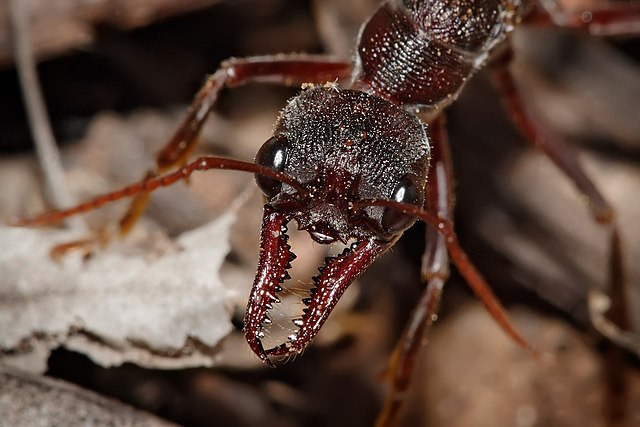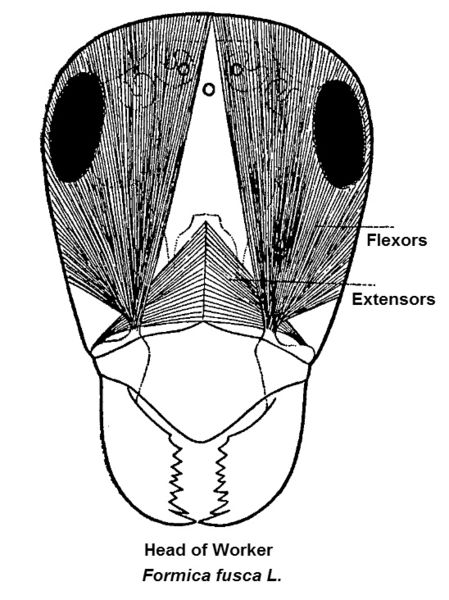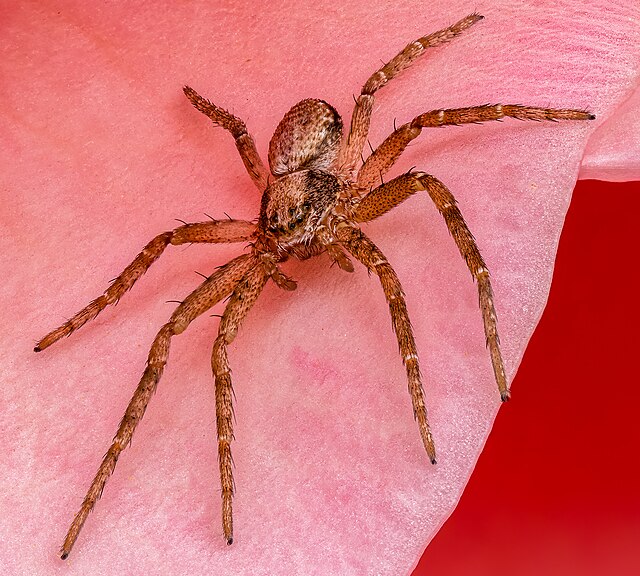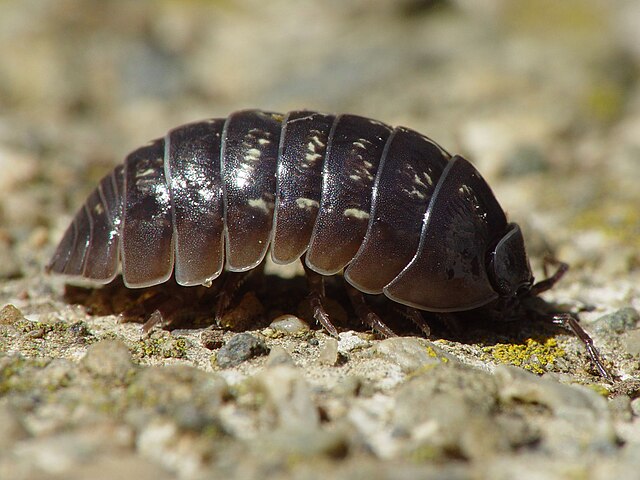Mandible (insect mouthpart)
Insect mandibles are a pair of appendages near the insect's mouth, and the most anterior of the three pairs of oral appendages. Their function is typically to grasp, crush, or cut the insect's food, or to defend against predators or rivals. Insect mandibles, which appear to be evolutionarily derived from legs, move in the horizontal plane unlike those of vertebrates, which appear to be derived from gill arches and move vertically.
The mandibles of a bull ant
Stag beetle with mandibles modified no longer used in feeding
Musculature of ant mandibles
Wasp drinking; the yellow mandibles can be seen on either side of the mouthparts
Insects are hexapod invertebrates of the class Insecta. They are the largest group within the arthropod phylum. Insects have a chitinous exoskeleton, a three-part body, three pairs of jointed legs, compound eyes, and a pair of antennae. Insects are the most diverse group of animals, with more than a million described species; they represent more than half of all animal species.
Insect
Insect: Six legs, three-part body (head, thorax, abdomen), up to two pairs of wings
Spider: eight legs, two-part body
Woodlouse: seven pairs of legs, seven body segments (plus head and tail)








